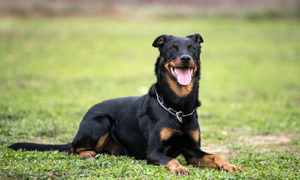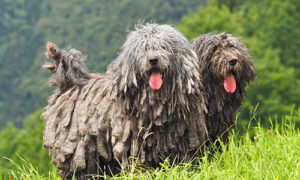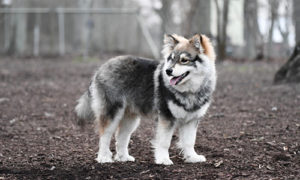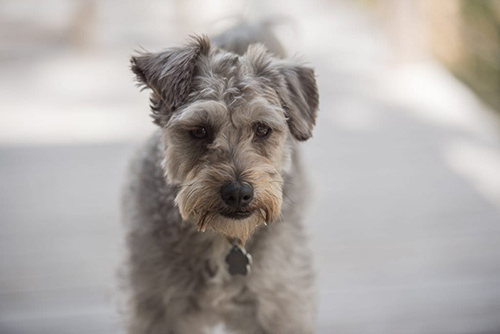
The Pumi is a Hungarian breed developed during the seventeenth and eighteenth centuries by crossing the Puli with regional French and German terrier-type dogs. The breeders of the dog first used the name Pumi in 1815. However, the Pumi wasn’t identified as a distinct breed until 1920, following the efforts of Dr. Emil Raitsis and other breeders to strengthen the characteristics that separated the Pumi from other herding dogs.
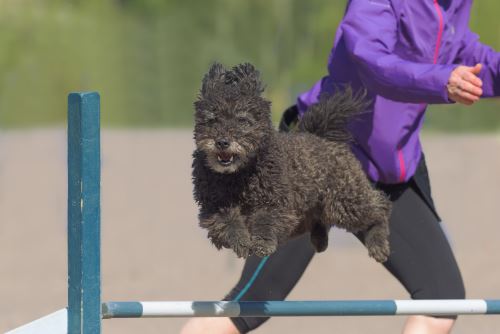
The FCI recognized the breed in 1966, and the first dog representatives were imported to America in the 1990s. The AKC’s Foundation Stock Service Program accepted the Pumi in 2001, and it entered the Miscellaneous class in 2011.
This dog is a medium-sized, agile stock dog with a rustic appearance and a square outline. The chest is deep and narrow, and the underline is moderately tucked up. Its neck arches slightly into a short, straight back and slightly sloping croup.
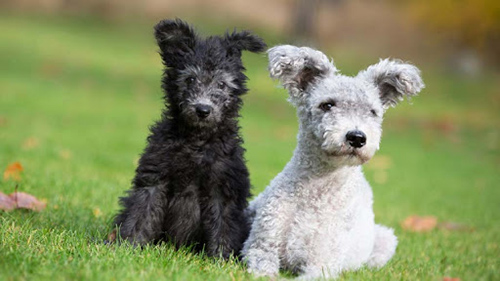
The legs are sturdy and balanced fore and rear; feet are round with well-cushioned pads and healthy dark nails. Its high-set tail forms a full circle over the back and may hang down when the dog rests.
The head is long with parallel planes and only a slight stop; the muzzle tapers to a black nose. Eyes are medium-sized, oval, set moderately full, and dark brown. All features of the head and face combine to produce a lively, intelligent expression.
Pumi Breed Facts
Activity level: This dog is an active working breed that must have daily mental and physical activity. The Pumi enjoys long walks, jogging, interactive play, and dog sports, such as herding, agility, obedience, and flyball.
Size: Males – 16-18 ½ inches, 27-29 pounds; females – 15-17 ½ inches, 22-24 pounds
Life expectancy: 12-13 years
Pumi Temperament
This dog is energetic, spirited with a strong working drive. Historically, herders used the dogs to guard, herd, and eradicate vermin; its temperament includes both herding-dog and terrier traits. These little dogs are bright, alert, and active, always ready to work. Also, they’re aloof with strangers. The Pumi is versatile and moderately easy to train, but they can be somewhat willful. With training, these dogs do well in many sports.
Grooming a Pumi
The Pumi’s coat does not shed and does not mat easily. It will need combing every other week. However, for showing, the coat is hand-stripped and trimmed. The hair should always be allowed to dry naturally after bathing to maintain the corkscrews and curls characteristic of the breed.
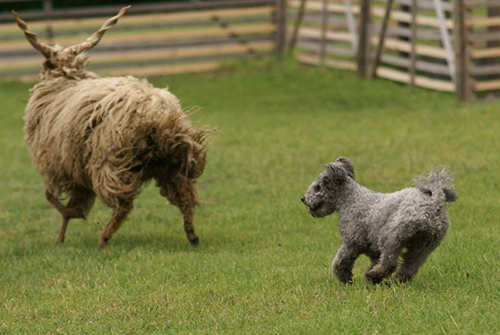
Coat: The harsh outer coat and softer undercoat combine to form corkscrews or curls covering the body. Its coat stands out from the body about 1 ½ – 3 inches but is shorter on the face and longer on the tail.
Color: Black, white, shade of gray, and shades of fawn from pale cream to red; in the fawn shades, black or gray shading is desirable. All colors may have gray, black, or white hairs mixed in as long as the base color appears as a solid color. Small white markings on the toe tips and chest may show.
Buying a Pumi Information and Breeder Advice
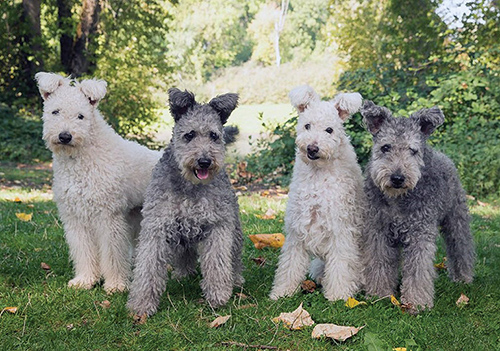
The Pumi needs active owners who will provide the dog with plenty of exercises for mind and body. Choose a breeder who conducts the recommended health screening and who breeds for recognized colors. You can find HPCA member breeders on the club’s website.
Parent club: Hungarian Pumi Club of America; founded in 2005
Rescue: Click on “Rescue” on the parent club’s home page to see dogs available through the club’s rescue program.


